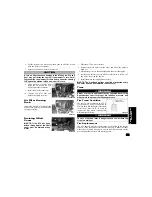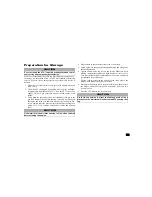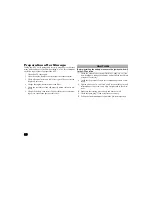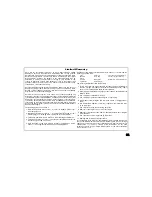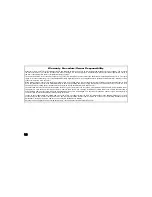
47
Division
II - Operation
/
Ma
in
te
na
n
ce
Liquid Cooling System
NOTE: Debris in front of the engine or packed between the
cooling fins of the radiator can reduce cooling capability.
Using a garden hose, wash the radiator to remove any
debris preventing air flow.
The cooling system capacity can be found in the specifications chart.
The cooling system should be inspected daily for leakage and dam-
age. If leakage or damage is detected, take the ATV to an authorized
Arctic Cat ATV dealer for service. Also, the coolant level should be
checked periodically.
NOTE: High engine RPM, low vehicle speed, or heavy load
can raise engine temperature. Decreasing engine RPM,
reducing load, and selecting an appropriate transmission
gear can lower the temperature.
When filling the cooling system, use a coolant/water mixture which
will satisfy the coldest anticipated weather conditions of the area in
accordance with the coolant manufacturer’s recommendations. While
the cooling system is being filled, air pockets may develop; therefore,
run the engine for five minutes after the initial fill, shut the engine
off, and then fill the cooling system to the bottom of the stand pipe in
the radiator neck.
Checking/Filling
1. Locate the coolant reservoir on
the right side behind the radia-
tor.
2. Remove the cap and fill with
the appropriate coolant until
coolant level is between the
LOW and FULL lines. Do not
overfill.
3. Install the cap on the reservoir.
Shock Absorbers
Each shock absorber should be visibly checked weekly for excessive
fluid leakage (some seal leakage may be observed but it does not
indicate the shock is in need of replacement), cracks or breaks in the
lower case, or a bent shock rod. If any one of these conditions is
detected, replacement is necessary.
NOTE: When the ATV is operated in extremely cold
weather (-23°C/-10°F or colder), a small amount of leakage
may be present. Unless the leakage is excessive, replace-
ment is not necessary.
The shock absorber has a spring
force adjustment sleeve with five
adjustment positions to allow the
spring to be adjusted for different
riding and loading conditions. If the
spring action is too soft or too stiff,
adjust it according to the chart.
CAUTION
Arctic Cat does not recommend using a pressure washer to
clean the radiator core. The pressure may bend or flatten the
fins causing restricted air flow, and electrical components on
the radiator could be damaged. Use only a garden hose with
spray nozzle at normal tap pressure.
CAUTION
Continued operation of the ATV with high engine temperature
may result in engine damage or premature wear.
KC338B
KC0102























